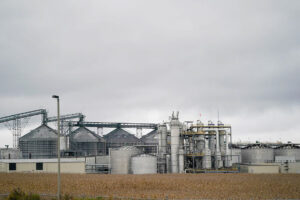THE decision to raise the biofuel blend must undergo an impact study to consider the possible impact on more vulnerable commuters, an economist said.
Leonardo A. Lanzona, an economics professor at the Ateneo de Manila, said that while the new policy “may be socially acceptable, the burden will be carried disproportionately by the lower-income populations who spend a larger proportion of their incomes on transportation.”
“While the long-term benefits of this program on health may be gained eventually by the poor, careful consideration and impact assessments would be necessary to ensure a just and equitable transition to more environmentally friendly fuels like biodiesel, without unduly burdening vulnerable populations,” he said via chat.
On Monday, the Department of Energy (DoE) announced the guidelines for raising the biofuel content of the biodiesel blend.
Oil companies have been directed to increase the coco diesel blend to 3% starting Oct. 1, to 4% by Oct. 1, 2025, and to 5% by Oct. 1, 2026.
The Biofuels Act of 2006 requires that all liquid fuels for motors and engines contain locally sourced biofuel components.
Since February 2009, fuel retailers have been required to offer a 2% biodiesel blend by volume on all diesel fuel.
Under the new policy, oil companies can also offer gasoline consisting of 20% bioethanol, on a voluntary basis.
At present, the DoE has required a 10% bioethanol blend by volume on all gasoline sold in the Philippines.
The DoE said an estimated net savings of P4.17 per liter of diesel could be realized with an increase of around 10% in mileage, based on a 30,000-kilometer road test using a coco methyl ester blend of 5%.
Meanwhile, increasing the bioethanol blend to 20% could result in a P3.21 per liter reduction in gasoline pump prices.
DoE Director for Energy Policy and Planning Michael O. Sinocruz said raising the biofuel content could help reduce pollution, and generate additional jobs. — Sheldeen Joy Talavera
